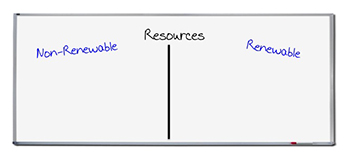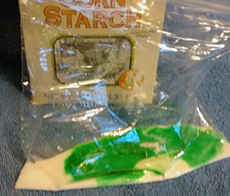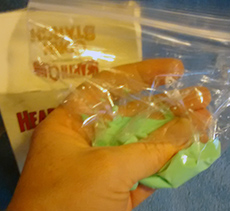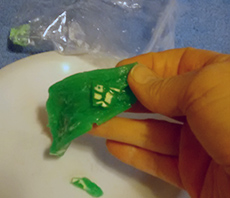Corn an A-maizing Plant: Food, Fuel, and Plastic
Students examine the growth, composition, history, and uses of corn through a close reading activity, discussion of renewable and non-renewable resources, and hands-on exploration of bioplastics made from corn.
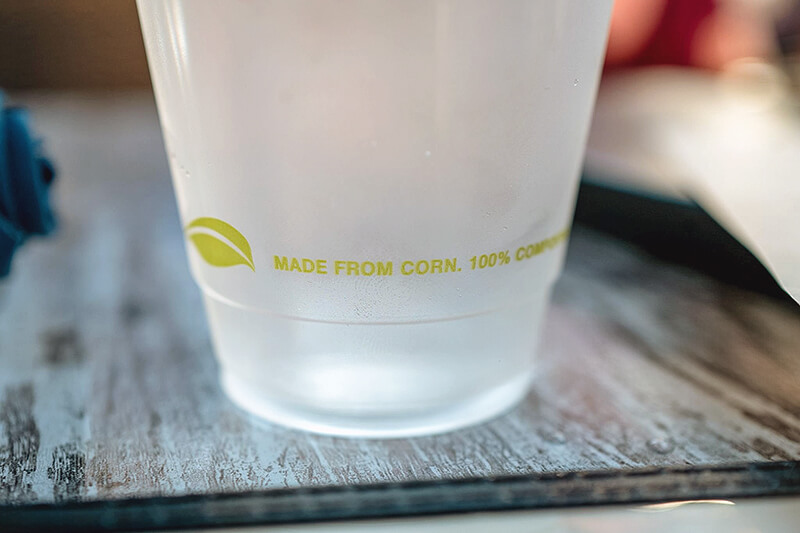
Background
Lesson Activities
Recommended Companion Resources
Credits
Author
Lynn Wallin, Lyndi Perry, Debra Spielmaker, Jessica Budge | Oregon, Utah, and Illinois Agriculture in the Classroom
Acknowledgements
The bioplastic or corn plastic activity has been part of numerous presentations and published informally by several Agriculture in the Classroom programs and agricultural science programs. The original source for the bioplastic mixture is unknown.
Sources
- https://www.bpiworld.org/resources/documents/washington%20state%20biobased%20fact%20sheet%20aug%2014.pdf
- http://www.usda.gov/nass/PUBS/TODAYRPT/cropan16.pdf
- https://www.agintheclassroom.org/media/cdqd0zrk/corn-agmag-interactive.pdf
Standards
Texas Content Area Standards
-
ELA: 3.110.5.b.4
Developing and sustaining foundational language skills: listening, speaking, reading, writing, and thinking- fluency. The students reads grade-level text with fluency and comprehension. The student is expected to use appropriate fluency (rate, accuracy, and prosody) when reading grade-level text.
- ELA: 3.b.4: Developing and sustaining foundational language skills: listening, speaking, reading, writing, and thinking- fluency. The students reads grade-level text with fluency and comprehension. The student is expected to use appropriate fluency (rate, accuracy, and prosody) when reading grade-level text.
-
ELA: 3.110.5.b.6
Comprehension skills: listening speaking, reading, writing and thinking using multiple texts. The student uses metacognitive skills to both develop and deepen comprehension of increasingly complex texts.
- ELA: 3.6.G: The student is expected to evaluate details read to determine key ideas.
- ELA: 3.6.H: The student is expected to synthesize information to create new understanding.
- ELA: 3.6.I: The student is expected to monitor comprehension and make adjustments such as re-reading, using background knowledge, asking questions, and annotating when understanding break downs.
-
ELA: 4.110.6.b.1
Developing and sustaining foundational language skills: listening, speaking, discussion, and thinking- oral language. The students develops oral language through listening, speaking, and discussion.
- ELA: 4.1.C: The student is expected to express an opinion supported by accurate information, employing eye contact, speaking rate, volume, enunciation and the conventions of language to communicate ideas effectively.
-
ELA: 4.110.6.b.4
Developing and sustaining foundational language skills: listening, speaking, reading, writing, and thinking- fluency. The students reads grade-level text with fluency and comprehension. The student is expected to use appropriate fluency (rate, accuracy, and prosody) when reading grade-level text.
- ELA: 4.b.4: Developing and sustaining foundational language skills: listening, speaking, reading, writing, and thinking- fluency. The students reads grade-level text with fluency and comprehension. The student is expected to use appropriate fluency (rate, accuracy, and prosody) when reading grade-level text.
-
ELA: 4.110.6.b.6
Comprehension skills: listening, speaking, reading, writing and thinking using multiple texts. The student uses metacognitive skills to both develop and deepen comprehension of increasingly complex texts.
- ELA: 4.6.G: The student is expected to evaluate details read to determine key ideas.
- ELA: 4.6.H: The student is expected to synthesize information to create new understanding.
- ELA: 4.6.I: The student is expected to monitor comprehension and make adjustments such as re-reading, using background knowledge, asking questions, and annotating when understanding break downs.
-
ELA: 5.110.7.b.4
Developing and sustaining foundational language skills: listening, speaking, reading, writing, and thinking- fluency. The students reads grade-level text with fluency and comprehension. The student is expected to use appropriate fluency (rate, accuracy, and prosody) when reading grade-level text.
- ELA: 5.b.4: Developing and sustaining foundational language skills: listening, speaking, reading, writing, and thinking- fluency. The students reads grade-level text with fluency and comprehension. The student is expected to use appropriate fluency (rate, accuracy, and prosody) when reading grade-level text.
-
ELA: 5.110.7.b.6
Comprehension skills: listening, speaking, reading, writing, and thinking using multiple texts. The student uses metacognitive skills to both develop and deepen comprehension of increasingly complex texts.
- ELA: 5.6.G: The student is expected to evaluate details read to determine key ideas.
- ELA: 5.6.H: The student is expected to synthesize information to create new understanding.
- ELA: 5.6.I: The student is expected to monitor comprehension and make adjustments such as re-reading, using background knowledge, asking questions, and annotating when understanding break downs.
-
Social Studies: 5.113.16.c.6
Geography. The student understands places and regions in the United States. The student is expected to:
- Social Studies: 5.113.16.c.6.C: locate on a map important political features such as the five largest cities by population in the United States and the 50 states
-
Science: 3.112.14.b.5
Matter and energy. The student knows that matter has measurable physical properties and those properties determine how matter is classifies, changed, and used.
- Science: 3.112.14.b.5.C: The student is expected to predict, observe, and record changes in the state of matter caused by heating or cooling such as ice becoming liquid water, condensation forming on the outside of a glass of ice water, or liquid water being heated to the point of becoming water vapor.
- Science: 3.112.14.b.5.D: The student is expected to explore and recognize that a mixture is created when two materials are combined such as gravel and sand or metal and plastic paper clips.
-
Science: 4.112.15.b.5
Matter and energy. The student knows that matter has measurable physical properties and those properties determine how matter is classifies, changed, and used.
- Science: 4.5.B: The student is expected to compare and contrast a variety of mixtures, including solutions.
-
Science: 4.112.15.b.7
Earth and space. The student knows that Earth consists of natural resources and its surface is constantly changing.
- Science: 4.7.C: The student is expected to identify and classify Earth's renewable resources, including air, plants, water, and animals, and nonrenewable resources, including coal, oil, and natural gas, and the importance of conservation.
-
Science: 5.112.16.b.5
Matter and energy. The student knows that matter has measurable physical properties and those properties determine how matter is classifies, changed, and used.
- Science: 5.5.C: The student is expected to identify changes that can occur in the physical properties of the ingredients of solutions such as dissolving salt in water or adding lemon juice to water.
-
Social Studies: 3.113.14.c.14
Social studies skills. The student applies critical-thinking skills to organize and use information acquired from a variety of valid sources, including technology. The student is expected to:
- Social Studies: 3.113.14.c.14.C: interpret oral, visual, and print material by sequencing, categorizing, identifying the main idea, distinguishing between fact and opinion, identifying cause and effect, comparing, and contrasting
-
Social Studies: 4.113.15.c.19
Social studies skills. The student applies critical-thinking skills to organize and use information acquired from a variety of valid sources, including technology. The student is expected to:
- Social Studies: 4.113.15.c.19.C: analyze information by applying absolute and relative chronology through sequencing, categorizing, identifying cause-and-effect relationships, comparing, contrasting, finding the main idea, summarizing, making generalizations and predictions, and drawing inferences and conclusions;
-
Social Studies: 5.113.16.c.23
Social studies skills. The student applies critical-thinking skills to organize and use information acquired from a variety of valid sources, including technology. The student is expected to:
- Social Studies: 5.113.16.c.23.C: analyze information by applying absolute and relative chronology through sequencing, categorizing, identifying cause-and-effect relationships, comparing, contrasting, finding the main idea, summarizing, making generalizations and predictions, and drawing inferences and conclusions
-
Science: 3.112.5.b.6
Matter and energy. The student knows that matter has measurable physical properties that determine how matter is identified, classified, changed, and used. The student is expected to:
- Science: 3.112.5.b.6.C: predict, observe, and record changes in the state of matter caused by heating or cooling in a variety of substances such as ice becoming liquid water, condensation forming on the outside of a glass, or liquid water being heated to the point of becoming water vapor (gas)
-
Science: 4.112.6.b.6
Matter and energy. The student knows that matter has measurable physical properties that determine how matter is identified, classified, changed, and used. The student is expected to:
- Science: 4.112.6.b.6.B: investigate and compare a variety of mixtures, including solutions that are composed of liquids in liquids and solids in liquids
-
Science: 4.112.6.b.11
Earth and space. The student understands how natural resources are important and can be managed. The student is expected to:
- Science: 4.112.6.b.11.A: identify and explain advantages and disadvantages of using Earth's renewable and nonrenewable natural resources such as wind, water, sunlight, plants, animals, coal, oil, and natural gas
-
Science: 5.112.7.b.6
Matter and energy. The student knows that matter has measurable physical properties that determine how matter is identified, classified, changed, and used. The student is expected to:
- Science: 5.112.7.b.6.C: compare the properties of substances before and after they are combined into a solution and demonstrate that matter is conserved in solutions
